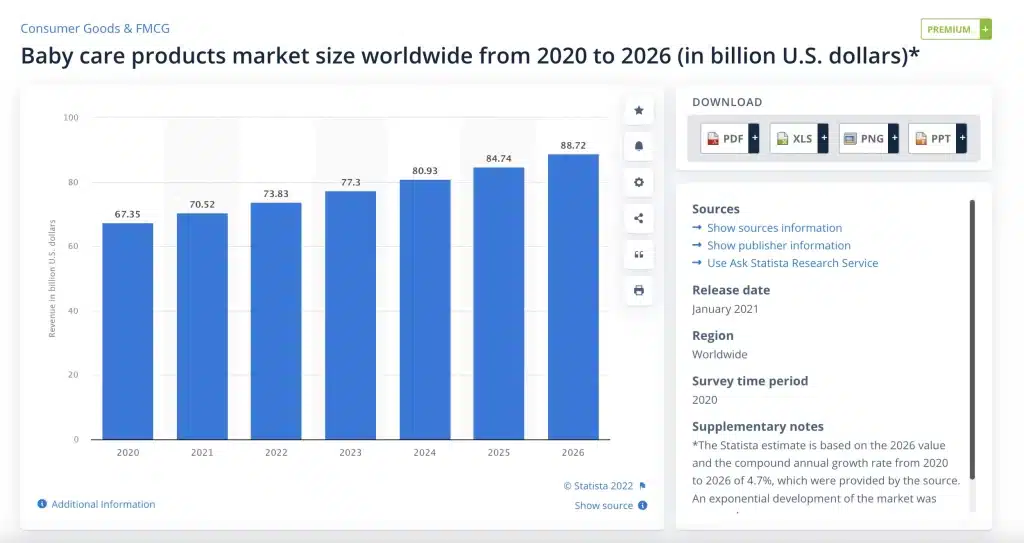
A niche market is understood as a very small segment of the market compared to the entire market. A niche market can be where there is little or no competition. These are often specialized markets with products that few people explore, promote less, are new, and not well-known.
When starting a dropshipping business, the first significant decision you must make is what you will sell. To ensure the success of your business, careful consideration is needed to choose a suitable niche.
However, finding a niche is not straightforward. For dropshipping, you need to select a niche market that is profitable and has low competition. That’s the basic formula. To achieve this, you will need time to research the market.
In this article, I will present step-by-step guidance for you to find a suitable niche.
The niche market you choose will be related to:
- What products you will sell
- At what price you will sell them
- Which suppliers you will collaborate with
- What marketing strategies you will use
- How your business will ultimately succeed
It is a big decision and not a simple matter.
How to Evaluate Ideas when Choosing a Niche Market?

Choosing a niche can be confusing. There are millions of niches, making it hard to know which one is feasible. Not only that, many of these niches already have a lot of direct competing businesses. So, “How can someone new like you be profitable when entering a highly competitive niche?”
At first glance, it seems like all niches are saturated, but that’s not true. Some niches still have genuine demand. Some niches are less explored, while others have demand based on the products your store can provide.
Essentially, you have to determine whether a niche is suitable based on the following criteria:
- Level of competition
- Product demand
- Long-term forecast of niche popularity
The best niches will have competition ranging from low to medium and high demand. It will also be perpetually popular. Of course, niches like that do not exist, so you have to find a way to balance these criteria. The balance that suits you may not suit others, so you have to think carefully about which factor is most important to you.
Here is a simple two-step process that you can use to start searching for a suitable niche. Once you find one, you can continue asking other questions to further narrow down your niche market selection.
Step 1: Search and Choose a Niche Market for Dropshipping
Start by searching for “trending” or low-competition niche markets using Google. Keep your search tight to get specific results. Low-competition niches often have fewer sellers, but this can limit profit potential. For niches with ultra-low competition, there will be fewer competitors, but there will also be fewer customers.
When reviewing niches, ensure they meet the following criteria:
- Is it a product-based niche?
- Evaluate the level of competition and the number of products in the niche.
Step 2: Research Existing Retailers in the Niche Market
Next, take the time to research existing retailers operating in your chosen niche market. Use Google to search and combine product keywords to see who is selling similar products. Keep notes on major retailers, including their names, websites, and business networks.
Examine how retailers present their websites and use social media. This gives you a preliminary insight into their advertising strategies and customer attraction. If there are not many retailers in the niche market, consider checking social media and online communities specifically dedicated to this niche market.
Choosing a Niche Market Based on Important Questions

- Product-Based:
- Is it a product-based niche?
- Assess the level of competition and the number of products in the niche.
- Popularity:
- How popular is the niche market?
- Learn about customer interest and demand to sustain business operations.
- Temporary Trend:
- Is this niche market just a result of a temporary trend?
- Determine stability and longevity of the niche over time.
- Passion and Value:
- Are you passionate about this niche market?
- Assess the ability to add value and confront the reality to choose a niche that can be effectively business-driven.
- Sustainability:
- Is this niche market sustainable?
- Evaluate the future of the niche market to ensure stability in dropshipping business.
Combine Theories and Apply to Reality:
Based on the above questions, apply them to examples of choosing between niches such as Travel Products, T-Shirts, Programming, and Fidget Spinners. Eliminate unsuitable niches based on criteria and find a suitable niche for dropshipping.
Selecting Products for Your Store:
After choosing the niche market, focus on selecting products to sell. Based on previous research, search for high-demand, reasonably priced products with minimal competition. Use sources like AliExpress to find suitable suppliers for your products.
Check Legal and Shipping Policies:
Before starting your business, make sure you have checked relevant legal regulations and shipping policies. Every business must adhere to tax regulations, return policies, and customer safety standards. Additionally, determine shipping costs and delivery times to provide accurate information to customers.
Build an Online Store:
Choose an online selling platform like Shopify, WooCommerce, or Magento to build your store. Customize your website to reflect your brand and products. Ensure that the payment process is easy and secure for customers.
Advertising and Marketing:
Use the research results from existing retailers to build advertising and marketing strategies. Utilize advertising on Facebook, Instagram, and Google to reach your target audience. Ensure that your strategy is creative and aligns with your niche market.
Track and Optimize:
Use tracking tools like Google Analytics to assess the performance of your store. Optimize the website, advertising, and marketing strategies based on this data to improve the quality and business performance.
Customer Care:
Develop a customer care strategy to ensure a positive shopping experience. Respond quickly to customer questions and efficiently process orders.
Conclusion:
By carefully choosing a niche market, thoroughly researching competing retailers, and building a solid strategy, you can create a successful dropshipping business. Note that dropshipping businesses require continuous knowledge and effort to maintain and grow.




